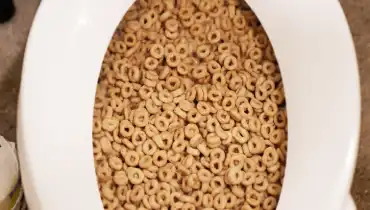Can One to Dispose of Food in the Toilet?
Can One to Dispose of Food in the Toilet?
Blog Article
The content directly below involving Think Twice Before Flushing Food Down Your Toilet is truly enjoyable. Check it out for yourself and decide what you think about it.

Introduction
Many individuals are frequently faced with the dilemma of what to do with food waste, especially when it concerns leftovers or scraps. One typical concern that develops is whether it's fine to flush food down the commode. In this write-up, we'll delve into the reasons individuals could think about purging food, the consequences of doing so, and different approaches for correct disposal.
Reasons that individuals might consider flushing food
Lack of awareness
Some people might not recognize the potential damage brought on by flushing food down the toilet. They might incorrectly believe that it's a safe practice.
Convenience
Purging food down the commode may appear like a quick and simple remedy to taking care of undesirable scraps, especially when there's no nearby trash can offered.
Negligence
In some cases, individuals may simply pick to flush food out of sheer idleness, without considering the effects of their activities.
Consequences of flushing food down the toilet
Environmental influence
Food waste that winds up in waterways can add to air pollution and harm water ecological communities. Additionally, the water made use of to purge food can stress water resources.
Plumbing problems
Purging food can lead to stopped up pipelines and drains pipes, causing expensive plumbing repairs and inconveniences.
Types of food that should not be flushed
Fibrous foods
Foods with coarse textures such as celery or corn husks can get entangled in pipes and create clogs.
Starchy foods
Starchy foods like pasta and rice can absorb water and swell, bring about obstructions in pipes.
Oils and fats
Greasy foods like bacon or food preparation oils need to never ever be flushed down the commode as they can solidify and cause clogs.
Correct disposal approaches for food waste
Using a waste disposal unit
For homes equipped with waste disposal unit, food scraps can be ground up and flushed with the pipes system. However, not all foods appropriate for disposal in this manner.
Recycling
Specific food product packaging materials can be reused, lowering waste and decreasing environmental influence.
Composting
Composting is an environment-friendly way to take care of food waste. Organic materials can be composted and used to improve soil for horticulture.
The value of proper waste monitoring
Decreasing environmental harm
Proper waste management methods, such as composting and recycling, help lessen pollution and protect natural resources for future generations.
Shielding pipes systems
By staying clear of the method of flushing food down the toilet, home owners can stop pricey pipes fixings and preserve the integrity of their plumbing systems.
Final thought
Finally, while it might be alluring to flush food down the bathroom for benefit, it is essential to understand the prospective consequences of this action. By taking on appropriate waste management practices and throwing away food waste responsibly, individuals can contribute to much healthier pipes systems and a cleaner environment for all.
FLUSH FOOD DOWN THE TOILET?
FLUSHING FOOD CAN CAUSE BLOCKED DRAINS IN YOUR HOME
All of the plumbing fixtures in your home are connected to the same sewer pipe outside of your home. This outdoor sewer pipe is responsible for transporting all the wastewater from your home to the Council sewer mains. Even small pieces of food that go down the kitchen sink can cause problems for your sewer. It should therefore be obvious that flushing larger bits of food, such as meat, risks a clog in either the toilet itself or the sewer pipes. Flushing greasy food is even more problematic because oil coagulates when it cools, coating the interior lining of your pipes.
THE TOILET IS NOT A BIN
Food isn’t the only thing that people shouldn’t be flushing down the toilet. People use the toilet to dispose of all kinds of things such as tampons, makeup wipes, dental floss, kitty litter and even underwear. Water goes to great lengths to educate residents about the high costs and stress placed on wastewater treatment systems simply from people flushing the wrong stuff down the toilet. It costs taxpayers millions of dollars each year, and homeowners thousands in blocked drain repairs.
FLUSHING FOOD IS A WASTE OF WATER
Flushing food is a waste of our most precious resource - water. In June this year Level 1 water restrictions were introduced to protect water supply from drought conditions. Much of New South Wales continues to be affected by prolonged drought with recent figures revealing up to 97 per cent of the state remains in drought. Depending on whether you have a single or dual flush toilet, every single flush uses between five and 11 litres of water. In the current climate this is a huge amount of water to be wasting on flushing food that should be placed in the bin (or better yet, the compost).
https://www.jabplumbingsolutions.com.au/blog/can-you-flush-food-down-the-toilet

I found that article on What Can Happen If You Flush Food Down the Toilet? while doing a lookup on the web. Sharing is caring. One never knows, you could be doing someone a favor. Thank-you for taking the time to read it.
Customer Reviews Report this page